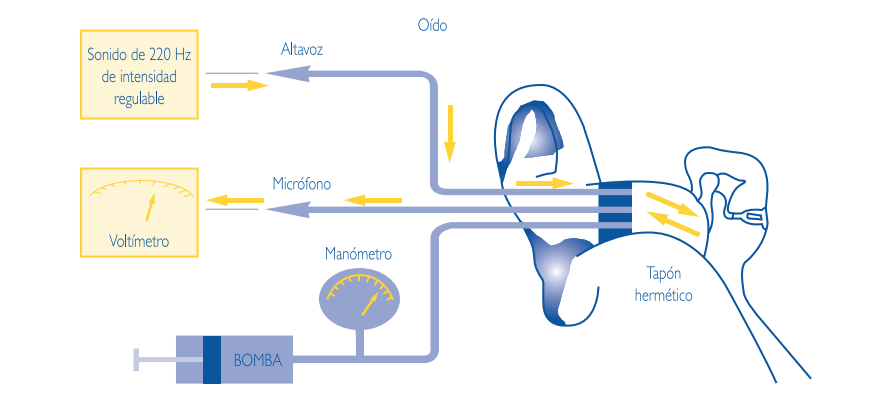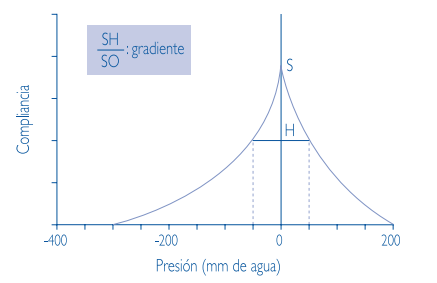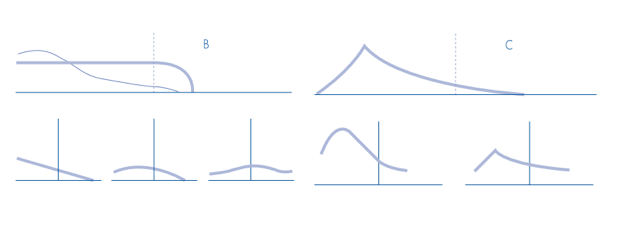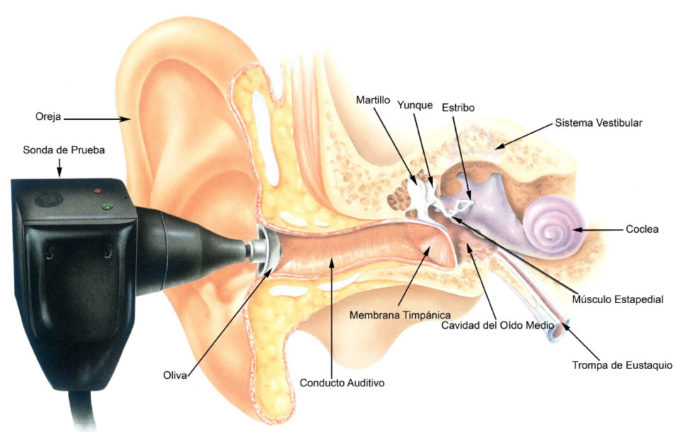Tympanometry or impedance testing is used to measure acoustic impedance by determining any difficulty in the transmission of vibrations through the middle ear.
What is tympanometry?
Tympanometry assesses the condition of the middle ear and measures the mobility of the eardrum and the conductive bones (ossicles).
The SEMM (Spanish Society of Maritime Medicine) defines tympanometry as the study of acoustic impedance or the “difficulty or resistance encountered by sound waves being propagated through a medium”.

Photo credit: otoneurologia
In otology specifically, impedance is the resistance of the eardrum and the bones in the middle ear to the passage of sound. The tympanic membrane and the ossicles have an impedance matching function which optimizes and filters external sounds being transmitted to the cochlea.
How is a tympanometry test carried out and the results measured?
First of all, an ear examination or otoscopy is carried out using an otoscope to ensure that the auditory system is clean and clear and that the eardrum is not perforated.

Photo credit: AEPAP
Next, the medical specialist places the tympanometer into the ear canal. This device changes the air pressure in the ear, generating a pure tone to measure the eardrum’s response to sounds under different pressures. The test process generates data that is recorded in a tympanogram.
When the pressure in the middle ear is normal and the eardrum and ossicles vibrate correctly, the results shown are classified as a Type A or normal tympanogram:

Photo credit: AEPAP
Conversely, if the patient displays some form of acoustic impedance, the shape made by the plotted results on this altered tympanogram will indicate that it is Type B or Type C:

Photo credit: AEPAP
Type B tympanograms are flat; that is, there is no peak at all. As Dr. Juan Solanellas states in the document titled Timpanometría published by the AEPAP (Spanish Association of Primary Pediatric Care), the tracings on this type of tympanogram may indicate a bulging eardrum or the presence of liquid or impacted wax in the middle ear.
On the other hand, the tracings on a Type C tympanogram show a peak that is displaced towards negative pressure values. This indicates a retracted eardrum and, therefore, Eustachian tube dysfunction. It may also signal that there is some effusion or that the patient is recovering from acute otitis media.
If you think that you have an issue with your middle ear, we recommend you visit your medical specialist for an ear examination (otoscopy) or tympanometry test.

After a fall and head injury I have had many symptoms in my head. Heavy, full, off balance, floating and woberly, buzzing. This only happens when I stand up and walk about? I have had CT and MRI scans. All negative.
Now waiting to see a ENT specialist. It is very debilitating. I have had it for 12 months.
Good morning Mary! Thank you for writing and telling us about your experience. Yes, the best thing you could do in this case is going to an specialist so he can diagnose your case.
This is a really great post! Thanks so much for sharing!
Thank you so much for your kind words, we really appreciate it! 🙂